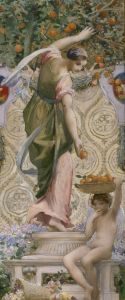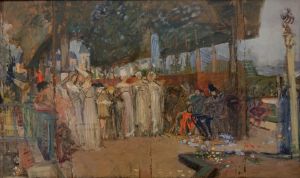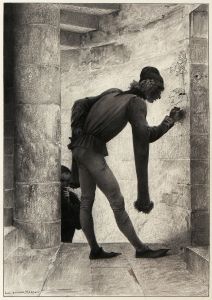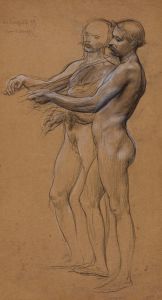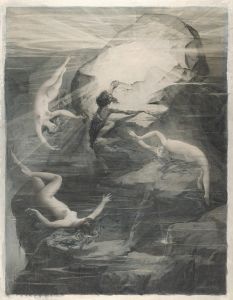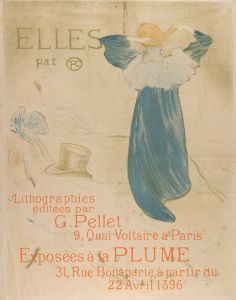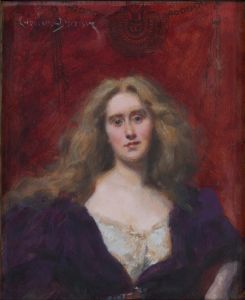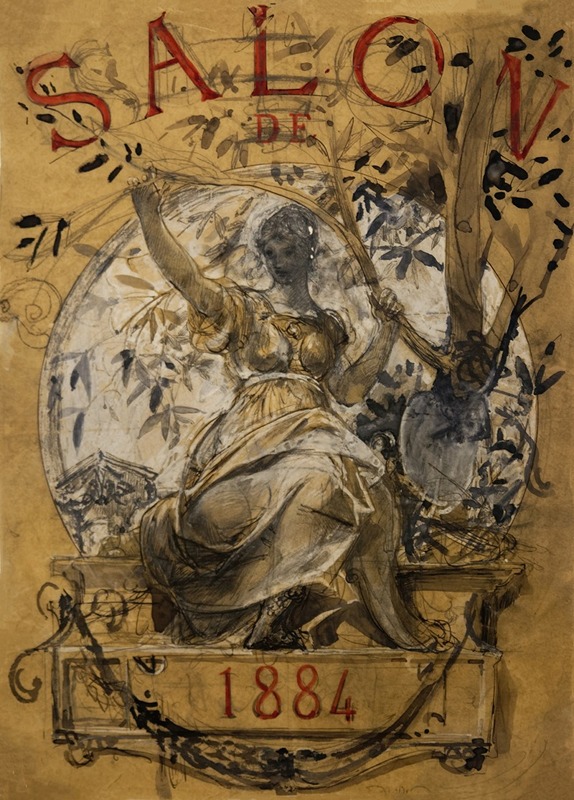
Salon de 1884, projet de couverture
A hand-painted replica of Luc-Olivier Merson’s masterpiece Salon de 1884, projet de couverture, meticulously crafted by professional artists to capture the true essence of the original. Each piece is created with museum-quality canvas and rare mineral pigments, carefully painted by experienced artists with delicate brushstrokes and rich, layered colors to perfectly recreate the texture of the original artwork. Unlike machine-printed reproductions, this hand-painted version brings the painting to life, infused with the artist’s emotions and skill in every stroke. Whether for personal collection or home decoration, it instantly elevates the artistic atmosphere of any space.
Luc-Olivier Merson was a notable French painter and illustrator, recognized for his contributions to the Symbolist movement in the late 19th and early 20th centuries. One of his works, "Salon de 1884, projet de couverture," reflects his artistic style and the cultural context of the period. However, detailed information about this specific artwork is limited.
Luc-Olivier Merson was born in Paris on May 21, 1846. He studied under Gustave Chassevent-Bacques and Isidore Pils at the École des Beaux-Arts in Paris, where he developed his skills in painting and illustration. Merson became known for his meticulous attention to detail and his ability to blend historical and allegorical themes, which were characteristic of the Symbolist movement. His work often featured religious and mythological subjects, rendered with a sense of mystery and depth.
The Salon of 1884 was an important event in the French art world, as it marked a period of transition and experimentation. The Salon was an official art exhibition of the Académie des Beaux-Arts in Paris, and it played a crucial role in shaping the careers of artists. During this time, the art scene was experiencing a shift, with new movements such as Impressionism and Symbolism gaining prominence. Artists were exploring new techniques and themes, moving away from the strict academic standards that had dominated the art world for centuries.
"Salon de 1884, projet de couverture" by Merson was likely created as a proposal for a cover design for the Salon's exhibition catalog. While specific details about the artwork are scarce, it can be inferred that Merson's design would have embodied the artistic trends and themes of the time. His work often incorporated elements of fantasy and allegory, which would have been fitting for a cover design intended to capture the imagination of the Salon's attendees.
Merson's broader body of work includes notable pieces such as "Notre-Dame de Paris," a painting that depicts the famous cathedral with a sense of grandeur and mysticism. He also contributed illustrations to various publications, showcasing his versatility as an artist. Merson's ability to convey complex narratives through his art made him a respected figure in the Symbolist movement.
Despite the lack of specific information about "Salon de 1884, projet de couverture," Merson's influence on the art world is well-documented. He received several accolades throughout his career, including the prestigious Prix de Rome in 1869, which allowed him to study in Italy and further refine his artistic style. Merson's work continued to be celebrated after his death on November 13, 1920, and his contributions to the Symbolist movement remain significant in the history of art.
In summary, while detailed information about "Salon de 1884, projet de couverture" is not readily available, Luc-Olivier Merson's reputation as a skilled painter and illustrator provides context for understanding the potential significance of this artwork. His ability to blend historical, religious, and allegorical themes with a Symbolist approach would have made his cover design for the Salon of 1884 a noteworthy contribution to the art exhibition.





